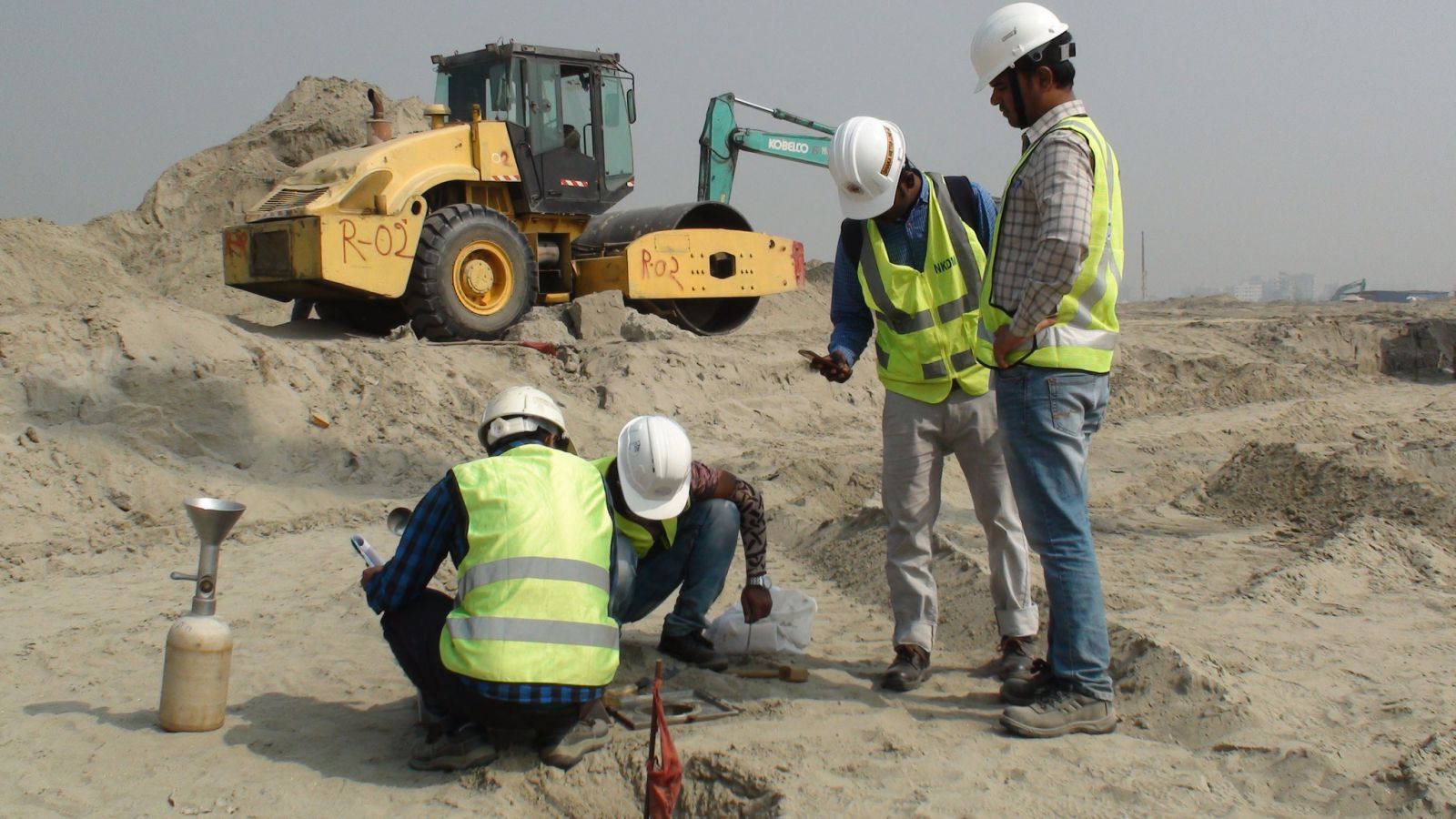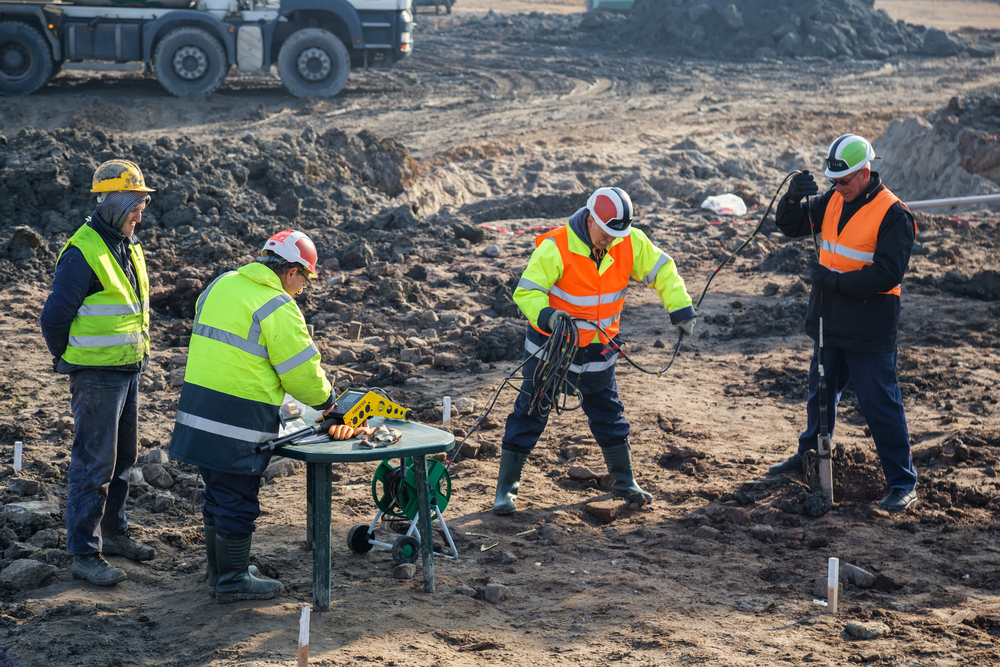Just How Geo Tech Engineers Can Address Common Soil Issues in Urban Growth
Just How Geo Tech Engineers Can Address Common Soil Issues in Urban Growth
Blog Article
Understanding the Essential Duty of the Geotechnical Industry in Modern Building And Construction Projects and Facilities Development
The geotechnical market is a foundation of modern-day construction and infrastructure advancement, supplying essential insights into dirt actions that directly influence project outcomes. With sophisticated dirt analyses and cutting-edge design remedies, geotechnical experts not just make sure architectural honesty yet additionally address sustainability problems in the middle of evolving environmental standards.
Importance of Soil Evaluation
Dirt evaluation plays an essential duty in the geotechnical sector, functioning as the structure for educated decision-making in building and construction tasks. Exact dirt examination is necessary for figuring out the suitability of a website for numerous kinds of structures, consisting of household homes, industrial structures, and bridges. By analyzing soil composition, thickness, toughness, and wetness material, designers can prepare for prospective challenges and reduce risks related to ground instability, disintegration, and negotiation.
The evaluation procedure generally involves a series of examinations and monitorings that provide essential information regarding the subsurface conditions. This data educates the layout and construction procedures, ensuring that frameworks are improved strong ground with adequate support. Comprehending the dirt profile allows designers to select ideal construction techniques and products, optimizing source application and reducing prices.
In addition to guaranteeing structural honesty, soil evaluation adds to environmental sustainability. By determining prospective contamination or damaging effects on surrounding ecosystems, engineers can implement methods to shield these natural deposits. Generally, comprehensive soil evaluation is crucial in the geotechnical field, underpinning the safety, effectiveness, and ecological responsibility of construction jobs.
Secret Geotechnical Strategies
A selection of vital geotechnical strategies are employed to assess and enhance the stability and performance of construction sites. One foundational method is soil tasting and screening, which permits designers to establish the physical and chemical homes of the ground. This info is vital for making notified decisions regarding foundation layout and building and construction approaches.
An additional necessary method is website characterization, which entails the thorough analysis of dirt and rock conditions through methods such as borehole exploration and in-situ screening. Methods like Standard Penetration Examinations (SPT) and Cone Infiltration Tests (CPT) offer valuable information on dirt stamina and stratigraphy.
Ground improvement strategies, such as dirt stabilization and grouting, are also essential in boosting the load-bearing ability of weak soils. These methods can minimize settlement and improve total site conditions.
In addition, slope security evaluation is essential for identifying possible landslide risks and ensuring the security of excavations. This analysis usually utilizes numerical modeling and limitation equilibrium approaches to predict dirt behavior under numerous conditions.
Including these geotechnical methods right into building preparation not only maximizes task outcomes yet also ensures the lasting sustainability of infrastructure advancement.
Effect On Building And Construction Safety

Moreover, efficient geotechnical design entails executing reduction strategies for identified threats. This may include dirt stabilization methods, preserving structures, or drain systems to alleviate hydrostatic pressure. By attending to these factors, building groups can reduce the possibility of crashes and boost worker security.
In addition, continual monitoring of site conditions is important throughout construction. Geotechnical instruments can supply real-time information regarding ground movement and stability, enabling for prompt treatments when essential.
Fundamentally, the geotechnical sector plays a pivotal role in protecting building tasks. By focusing on ground honesty and using strenuous assessment methods, the geotechnical sector not only safeguards the workforce however additionally adds to the long life and integrity of created framework.
Sustainability in Geotechnical Practices

Moreover, geotechnical engineers are currently using innovative modern technologies, such as geosynthetics, which boost dirt security while reducing the volume of material needed. This not only saves resources but also leads to much less waste generation (tailings engineer). The integration of lasting layout concepts into geotechnical engineering urges the use of renewable resource resources in building and construction procedures, even more decreasing carbon emissions
In addition, detailed website evaluations are important for identifying possible environmental impacts before construction starts. By carrying out these analyses, geotechnical experts can develop strategies that alleviate unfavorable effects, making certain compliance with ecological guidelines. Overall, the focus on sustainability within geotechnical techniques not just adds to the long life and resilience of framework however additionally promotes a liable technique to land and resource administration. This commitment is crucial for fostering lasting development in the contemporary building and construction landscape.
Future Trends in Geotechnical Design
Development is driving the future of geotechnical design, as arising techniques and technologies reshape the market. The assimilation of innovative data analytics and man-made knowledge is readied to transform site examination and danger analysis, making it possible for engineers to make more informed decisions based on real-time data. In addition, making use of geosynthetic products is gaining traction, providing sustainable services that improve soil stability and minimize ecological effect.
One more considerable trend is the fostering of automated and robotic systems for monitoring and construction procedures. These innovations not only improve precision however also boost security by minimizing human participation in harmful environments. In addition, tailings engineer the application of Building Details Modeling (BIM) in geotechnical style facilitates boosted collaboration amongst stakeholders, enhancing task shipment and reducing prices.
As climate adjustment positions brand-new difficulties, the sector is progressively concentrating on durability and adaptability in style practices, making sure framework can endure severe weather condition occasions. Finally, the continuous fad toward sustainability will certainly drive development in eco-friendly materials and approaches, aligning geotechnical design with more comprehensive environmental objectives. Jointly, these fads will shape a much more reliable, sustainable, and durable geotechnical landscape for future jobs.
Verdict

The geotechnical market is a cornerstone of modern building and construction and framework advancement, offering crucial insights right into dirt behavior that straight affect job outcomes. geo tech engineer.Soil analysis plays an essential function in the geotechnical market, offering as the structure for informed decision-making in construction tasks. In general, extensive soil analysis is important in the geotechnical field, underpinning the security, efficiency, and ecological obligation of building projects
Construction safety is significantly influenced by geotechnical practices, as the security and integrity of the ground directly impact the general security of a building and construction site.In conclusion, the geotechnical market is vital in modern-day building and construction and framework growth, offering essential evaluations that ensure architectural honesty and security.
Report this page